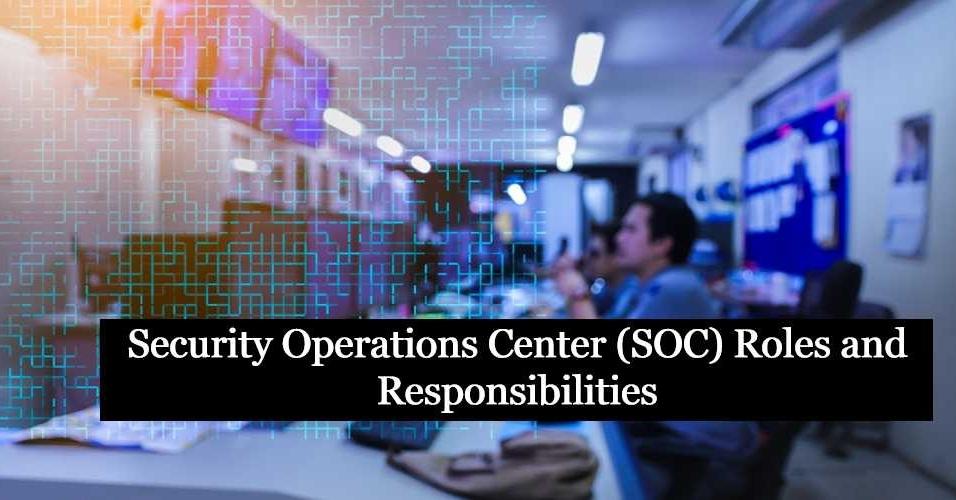SOC teams can stop cyberattacks using unified threat intelligence and well-documented procedures before they cause damage or spread. They also limit business impact after an attack by shutting down systems, restoring data, wiping infected endpoints and applications, and cutting over to backup systems.
SOC teams monitor networks and systems 24/7 to keep attackers from breaching them. They may be on-premises or remote.
Threat Detection
A SOC monitors an organization’s networks and endpoints around the clock, detecting and responding to threats. The team monitors data activity using SIEM (security information and event management) tools or EDR (endpoint detection and response). These systems provide a wealth of alerts, but they must discern between normal and malicious activities. This requires a strong understanding of the tools and an ability to collaborate with teams effectively.
Cybercriminals constantly refine their attack methods, making it difficult for SOCs to keep up with them. However, a successful SOC can use the intelligence gathered from these systems to stop future attacks before they happen.
SOCs also work with onsite IT teams to perform vulnerability assessments and penetration tests and review security data and threat intelligence. This helps an organization discover and correct weaknesses in its infrastructure before they’re exploited. It’s important to note that a SOC can be in-house or outsourced (wholly or partially).
As one of the functions of the SOC, it may operate as a part of an IT security group under the CIO or CISO, or it could be a standalone function managed by a cybersecurity expert. An outsourced SOC operates as a service and may be offered by a vendor or as software hosted in the cloud. SOCs are typically organized into a hub-and-spoke model, with a centralized team responsible for monitoring an organization’s overall security posture and multiple specialized teams that handle specific areas of the organization.
Incident Response
A SOC team must have many skills to handle incident response. One critical task is to locate attackers and minimize their ability to damage the organization. This requires a keen understanding of attacker methodologies and specialized technical and communication skills. A SOC also works to communicate with internal teams and external partners, including law enforcement and other organizations that may be involved in the response.
A SOC also continually works to improve processes and technologies that protect against cyberattacks. This includes developing security policies and procedures, identifying and fixing vulnerabilities, and conducting penetration testing and other simulations to test the defenses. The SOC team uses this intelligence to refine applications, systems, policies, and incident response plans.
Lastly, the SOC team is responsible for keeping up with the latest information security solutions, technologies, and threat intelligence – news and information about cyberattacks and the hackers who perpetrate them. A SOC must have the tools to quickly correlate data and provide context to identify better, respond to, and recover from cybersecurity incidents.
For example, a SOC should be able to automatically correlate logs from across an organization’s entire IT infrastructure, including networks, computers, devices, and appliances. This helps the SOC to identify and respond to a threat before it can do damage, reducing alert fatigue, context switching, and mean time to response (MTTR). It should also be able to deploy automation, orchestration, and artificial intelligence (AI) to reduce manual work, enable faster responses, eliminate blind spots, and enhance the effectiveness of preventive tools.
Forensics
A security operations center is a team of cybersecurity experts that monitor, detect, analyze, and respond to security incidents within an organization. The goal is to protect an organization from cyberattacks and minimize a breach’s impact on business functions.
The SOC team uses monitoring tools like PRTG multiboard to scan technology infrastructure around the clock for abnormalities, using a combination of reactive and proactive measures. They also use log management to ensure that any activity is logged and tracked in case of future issues. All of this information is combined with intelligence from external feeds and product threat reports to understand better attacker behavior, infrastructure, motivations, and capabilities.
When alerts do come in, the SOC must look at them closely and determine how serious each threat might be. They must triage each and act quickly to mitigate the risk, including shutting down or isolating endpoints, terminating processes, deleting files, etc.
In addition to identifying and mitigating threats, SOC teams must be able to recover from attacks. This includes restoring and reestablishing systems, data, and functionality to what they were before the incident occurred. This can include coordinating with users, law enforcement, and other parties involved in the incident. It may also involve creating system back-ups and policies to prevent further damage or data loss.
Training
Security operations center teams are trained to look for suspicious activity in the network, systems, and devices. They analyze technology infrastructure 24/7 and rely on many tools to identify unusual activity that may indicate a cyberattack is underway. They also review and monitor security alerts, using a SIEM to aggregate and correlate data feeds from applications, firewalls, operating systems, and other tools across the enterprise. This enables them to establish a baseline for what should be considered normal activity and helps them spot anomalies.
The SOC team is also responsible for preventative measures, aiming to reduce the organization’s attack surface by keeping track of software patches, firewall updates, and other tools, reducing misconfigurations, and removing vulnerable servers, applications, and endpoints from the network. In addition, they create system back-ups and assist with creating backup policies and procedures, so the business can get up and running as quickly as possible after a threat or incident.
When monitoring tools issue alerts, it’s the SOC team’s responsibility to closely examine each one, discard false positives and determine how aggressive any actual threats might be and what they might target. This allows them to prioritize alerts and handle the most severe ones first to minimize the impact on the business.
